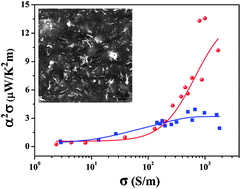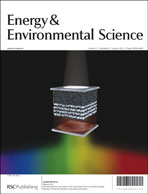The energy-filtering effect was successfully employed at the organic–inorganic semiconductor interface of poly(3-hexylthiophene) (P3HT) nanocomposites with the addition of Bi2Te3 nanowires, where low-energy carriers were strongly scattered by the appropriately engineered potential barrier of the P3HT–Bi2Te3 interface. The resulting P3HT–Bi2Te3 nanocomposites exhibited a high power factor of 13.6 μW K−2 m−1 compared to that of 3.9 μW K−2 m−1 in P3HT. The transport characteristics of nanocomposites, including the carrier concentration, mobility, and energy-dependent scattering parameter, were revealed by the experimental measurements of electrical conductivity, Seebeck coefficient, and Hall coefficient to quantitatively elucidate the carrier energy scattering at the P3HT–Bi2Te3 interface. The ability to rationally engineer the organic–inorganic semiconductor interfaces of polymer nanocomposites to achieve an improved Seebeck coefficient and power factor provides a potential route to high-performance, large-area, and flexible polymer thermoelectric materials.

You have access to this article
 Please wait while we load your content...
Something went wrong. Try again?
Please wait while we load your content...
Something went wrong. Try again?


 Please wait while we load your content...
Please wait while we load your content...